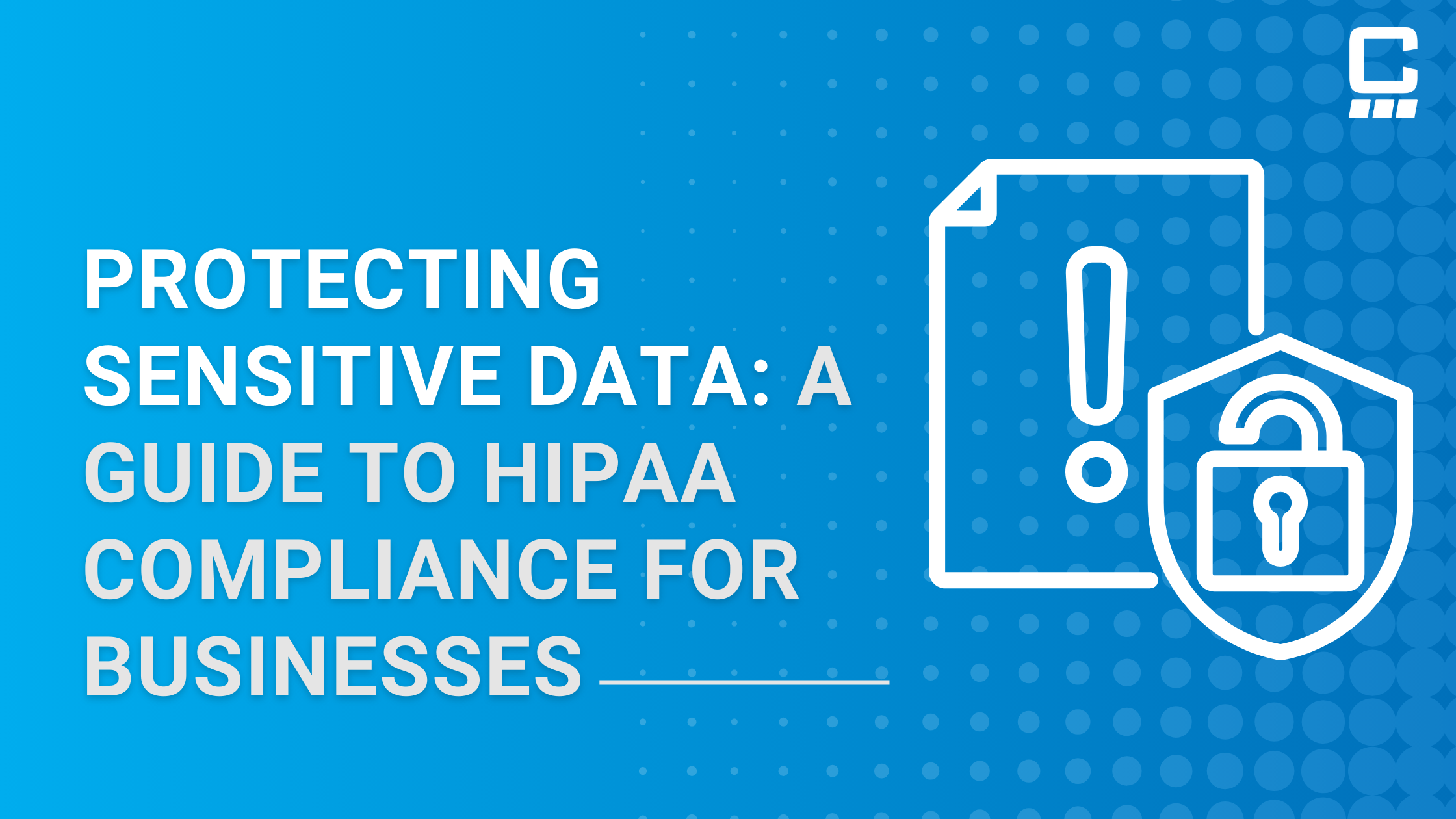
In today's digital age, the protection of sensitive data is essential for businesses, especially those in the healthcare sector. The Health Insurance Portability and Accountability Act (HIPAA) sets forth stringent regulations to safeguard patient information and ensure privacy and security in healthcare operations. For businesses handling sensitive data, understanding and adhering to HIPAA compliance standards are essential to avoid costly penalties and reputational damage.
In this guide, we'll explore the importance of HIPAA compliance and provide actionable steps for businesses to achieve and maintain compliance in their IT operations.
Understanding HIPAA Compliance
HIPAA regulations encompass a wide range of requirements aimed at protecting the privacy and security of patient health information (PHI). These regulations apply not only to healthcare providers but also to businesses that handle PHI, known as covered entities and business associates. HIPAA compliance involves implementing administrative, physical, and technical safeguards to protect PHI from unauthorized access, disclosure, and misuse.
What are the Key Components of HIPAA Compliance?
- Administrative Safeguards: Administrative safeguards include policies, procedures, and processes designed to manage the security of PHI. This includes conducting risk assessments, implementing workforce training programs, and establishing contingency plans for data breaches and emergencies.
- Physical Safeguards: Physical safeguards focus on the physical security of facilities and equipment that house PHI. This includes controlling access to PHI storage areas, implementing security measures to prevent unauthorized access, and securing electronic devices containing PHI.
- Technical Safeguards: Technical safeguards involve the use of technology to protect PHI. This includes implementing access controls, encryption, and audit controls to ensure the confidentiality, integrity, and availability of PHI stored or transmitted electronically.
- Documentation and Record-Keeping: HIPAA compliance requires thorough documentation and record-keeping to demonstrate compliance efforts. This includes maintaining records of risk assessments, policies and procedures, training materials, and incident response plans.
- Business Associate Agreements: Covered entities must enter into business associate agreements (BAAs) with any vendors or service providers who have access to PHI. These agreements outline the responsibilities of both parties regarding the protection and use of PHI and ensure compliance with HIPAA regulations.
What are the Actionable Steps for Achieving HIPAA Compliance?
- Conduct a Risk Assessment: Start by conducting a thorough risk assessment to identify potential vulnerabilities and risks to PHI. This will help you prioritize security measures and allocate resources effectively.
- Develop HIPAA Policies and Procedures: Develop comprehensive HIPAA policies and procedures that address all aspects of compliance, including privacy, security, and breach notification requirements. Ensure that all employees receive training on these policies and procedures regularly.
- Implement Security Controls: Implement robust security controls to protect PHI from unauthorized access and disclosure. This includes access controls, encryption, secure authentication methods, and regular monitoring of systems and networks for suspicious activity.
- Regular Security Audits and Assessments: Conduct regular security audits and assessments to evaluate the effectiveness of your security controls and identify any gaps or areas for improvement. This proactive approach helps ensure ongoing compliance and strengthens your overall security posture.
- Incident Response Planning: Develop and maintain a comprehensive incident response plan to guide your organization's response to security incidents and data breaches. This plan should outline procedures for detecting, reporting, and mitigating security incidents, as well as for notifying affected individuals and regulatory authorities as required by HIPAA regulations.
Additional Measures for Strengthening HIPAA Compliance
While the key components and actionable steps outlined above are essential for achieving HIPAA compliance, there are additional measures that organizations can take to further strengthen their compliance efforts and enhance the security of patient data. Here are some additional steps to consider:
- Employee Training and Awareness: In addition to regular training on HIPAA policies and procedures, organizations should prioritize ongoing education and awareness initiatives to keep employees informed about the latest security threats and best practices for safeguarding patient data. Training sessions, simulated phishing exercises, and awareness campaigns can help instill a culture of security throughout the organization.
- Regular Security Updates and Patch Management: Keeping software and systems up to date with the latest security patches and updates is crucial for mitigating vulnerabilities and reducing the risk of security breaches. Implementing a robust patch management process ensures that security updates are applied promptly across all systems and devices within the organization.
- Data Encryption and Secure Transmission: Implementing encryption protocols for data at rest and in transit adds an extra layer of protection to sensitive patient information. Encryption helps prevent unauthorized access to PHI, even in the event of a data breach or unauthorized interception of data during transmission.
- Access Control and User Authentication: Implementing strong access controls and user authentication mechanisms ensures that only authorized individuals have access to patient data. Role-based access control (RBAC), multi-factor authentication (MFA), and least privilege principles help minimize the risk of unauthorized access and data breaches.
- Vendor Management and Oversight: Healthcare organizations should carefully vet and monitor third-party vendors and service providers who have access to PHI. Implementing robust vendor management processes, conducting due diligence assessments, and including stringent security requirements in vendor contracts help mitigate the risks associated with third-party access to patient data.
Conclusion
In conclusion, achieving and maintaining HIPAA compliance requires a multifaceted approach that encompasses administrative, physical, and technical safeguards, as well as ongoing monitoring and assessment of security controls. By implementing the key components of HIPAA compliance outlined in this guide and supplementing them with additional measures for strengthening security, organizations can protect patient data and mitigate the risks associated with evolving cyber threats.
Contact Charles IT today to learn more about our HIPAA compliance services and how we can help your organization achieve its compliance goals.



